Chihuahua is a smart, small dog, which, despite its cute and innocent appearance, has a pretty strong character. One quality is inherent in almost all representatives of this breed - stubbornness. And it can play a cruel joke if you do not get involved in training the animal in a timely manner. The leadership qualities of the dog need to be developed, vigilance and observation must be strengthened, but to the extent that it is not to the detriment of the dog and others.
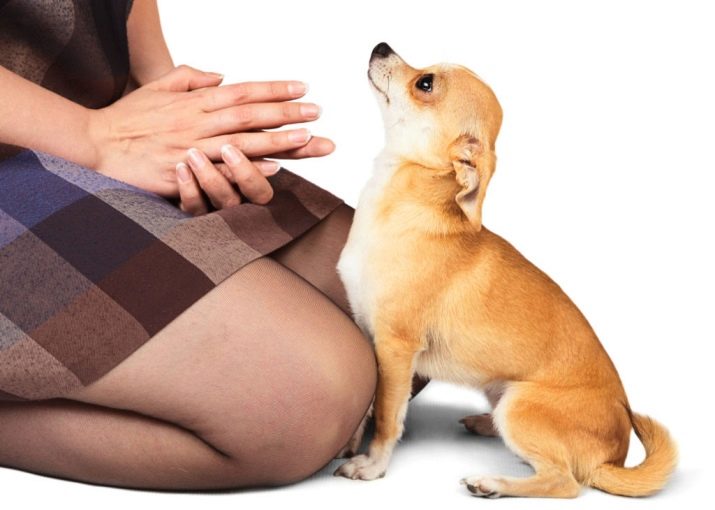
Why is training necessary?
From an early age, these dogs want to lead: they want to be in charge in the house. No modest size prevents the Chihuahua from gaining this position. But if the owner indulges in such self-confident behavior, he will lose his authority. Therefore, while the puppy is still small, you need to deal with it carefully - to teach good behavior and obedience literally every day. An adult dog is almost impossible to retrain.
Yes, the behavior of an adult dog can be adjusted, but the owner will have to prove every day that he is in charge of the house. Such a stubborn breed. Therefore, puppies that have reached three months of age are the most successful object of training. Some dogs are susceptible to training, there are no problems with them, while others make the owner sweat. But all cases can be controlled. Chihuahua training is needed for several purposes.
- Socialization. The dog should not be a source of threat to others when it appears in public. The breed is still, despite the size of the dog, quite aggressive.
- Parenting. Without training, chaos will begin: gnawed furniture, angry barking for no apparent reason, torn pillows, clothes damaged by the dog’s temperament - all these are very real prospects.
- Security. A trained dog is protected: such dogs are much less likely to fall under the wheels of a car, are included in street "showdowns" with yard dogs, and are lost.
- Participation in exhibitions. If you get a dog for the purpose of her glorious dog "career", you will have to teach her to communicate with people. Doggie should be friendly, restrained. Her aggressive attitude will prevent experts from inspecting the dog, feeling and so on.
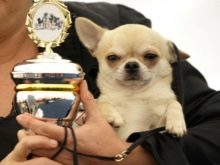
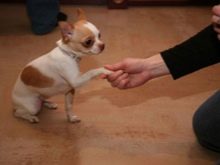
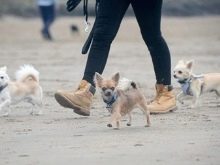
Of course, the owner himself must know what specific rules need to train a dog.
rules
Both the boy and the girl are trained almost identically. The nuances depend on the characteristics of the doggie: someone is obstinate less, someone shows himself quite sternly. If the Chihuahua is raised correctly, then she behaves as follows:
- she behaves calmly, does not rush at people or cats, does not bite;
- adequately responds to cars and other noise sources;
- He doesn’t go to the toilet until she is taken for a walk;
- eats according to the regime, does not beg for food and does not try to pull off the table;
- knows his place, does not think to climb into unacceptable places;
- after leaving a person for work, he keeps everything in the house as was with him; does not organize a mess, does not rattle pillows, does not gnaw furniture, does not spoil the floor;
- It doesn’t just bark, it makes no sounds at night.


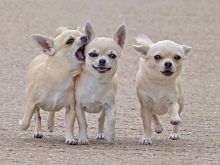
There are still questions: what else can you teach a dog in principle, whether it will, for example, dance to music and give a paw. Yes, a Chihuahua is capable of this, and she can also be a guide, carry a small object in her teeth, guard the indicated thing, execute commands and tracks, go to the toilet in the diaper. And it may even say something like “ma-ma”. But all these skills require training.
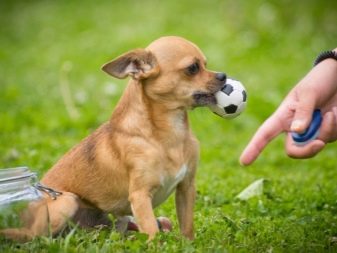
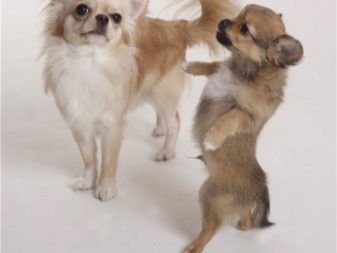
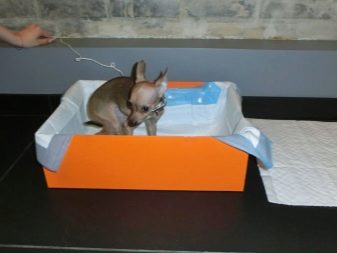
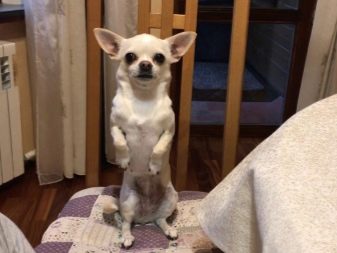
How to start raising a dog?
Raising a dog begins with accustoming to a nickname. Say it in a calm, not very loud voice when you summon a dog to him: he should form pleasant associations regarding his "name". If you have to scold the pet for misconduct, try not to pronounce the nickname. It usually takes up to six days to remember.
The next step, without which you can’t raise an animal, teach to understand the intonation of the voice. When scolding a pet, praise or just communicate - these should be different intonations. The team voice will be sharper, clearer, even angry, while the facial expressions, inherent gestures, will be quite severe. When praising a doggie, the intonation should be gentle, the tone is delicate (stroke your pet). And also you should clearly indicate the restrictions that the dog should not be suppressed.
If you do not want him to climb into bed or on an armchair, beg for food, gnaw furniture, all this must be indicated immediately. Do not wait for the animal to grow up, feeling like a master.
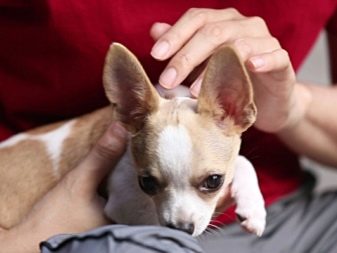
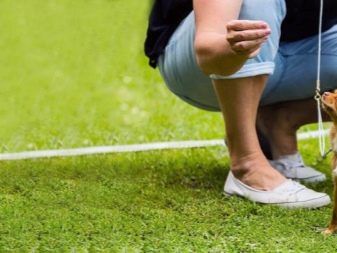
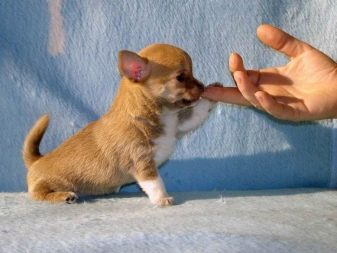
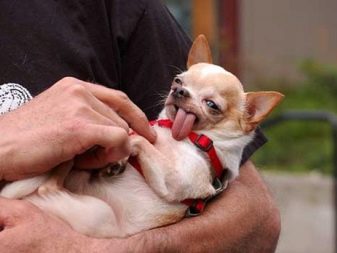
It is necessary to adhere to simple rules during animal training.
- During dog walking on a leash, the owner should lead, not the dog. It is you who choose the movement vector, and not the Chihuahua sets the pace and direction of the walk. It’s good if the dog keeps up with you. Walk often: it’s useful for your pet to actively get acquainted with the outside world. It must be adapted to street noise. Watch how the dog reacts to animals, teach her to indifferent reaction. Chihuahua people should be generally friendly.
- Praise and encourage the animal too when it honors your requests. Not everything turns out right away, some of his actions may look awkward, but they need to be noted. If a person is a perfectionist himself, it will be difficult for him: not everyone will realize that the dog is trained, and not already perfectly obedient, born. This is serious work.
- A dog cannot be punished for an incomplete command, let alone beat. You have to be fair. Try to figure out the causes of disobedience yourself: maybe you yourself are inconsistent in your requirements. Repeat clearly defined requirements over and over again.
- Do not miss a day in training. In the learning process, the dog should not distract anything.Train in peace and quiet. Just 5-10 minutes a day is enough.
- Be a leader in your relationship. The dog may well be capricious, relax, she always feels the owner’s weakness. Remember - you are the main one, you are the leader in your pair. If you are often condescending to your pet, he will appreciate it as your weakness.
- Repeat previously learned. Before moving on to new teams, walk through what you have already learned. Each of the commands should be deposited in the long-term memory of the beast, the execution of the command can be brought to the ideal.
- A well-fed pet should not be trained. If you allow encouragement, then a reinforced doggie can look at him very indifferently.
- Consistency is all in training. The beginning should always be done with simple commands and tricks. No circus numbers are needed if the dog allows the owner to walk during the walk (and not him), if it bites when it comes in contact with passers-by.
- Training should harmoniously fit into the daily rhythm of the pet. For example, in order to get dinner, the dog must execute the “sit” command. Or, for example, when training for a walk, ask the dog to bring a leash. If the pet’s behavior is displeasing, the “place” command follows.
- If you feel ill, unwell, if you have a little drink, refuse to practice with a dog. Your unusual condition can cause a flash of aggression in the dog, which is fraught with negative consequences.
- The dog needs to be punished only at the crime scene - she will not understand the abstract reprimand. In addition, the dog will still be offended by you because you treated him unfairly.
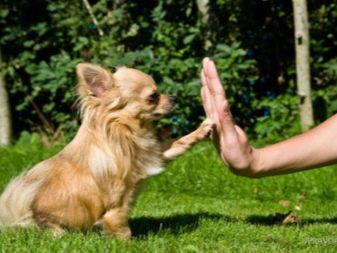

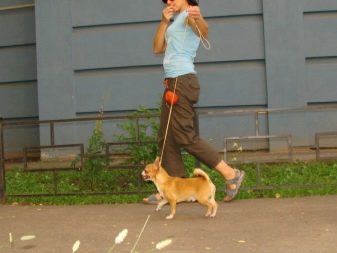
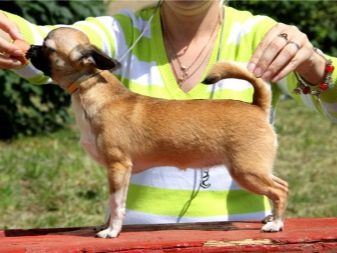
Be sure to encourage every obedience, correctly performed action. At first, you can’t do without treats, but don’t make it a system. Regular praise should sound more often. Otherwise, the dog will, without your request, fulfill certain requirements, only receive a present.
Basic teams
To prevent any unpleasant situations from bothering you and the dog, the advice of dog handlers is very useful for beginner trainers. These are not the teams that are being studied for showing off the so-called pet show. These are the actions that organize the dog, ensure its safety and so on. The basic set includes several commands.
- "Fu!" You must pronounce it to the owner in a loud, rather angry voice. Stomp your foot with it. Such a command is appropriate in the case of the prohibition of an action. If, for example, a dog aggressively behaves in relation to your interlocutor, cat or other animal, you need to specifically forbid it. Initially, attention can be distracted by a treat.
- "Sit!" The command is accompanied by an ordered tone, the pet should look directly for you. Take a treat in the palm of your hand, let the animal sniff, but do not rush to feed. Raise your hand above the dog’s head, the pet should see the reward. Give the command "sit", slightly lowering his hand over his head. First, you will have to help the dog by slightly pressing him on the croup. Only after that give a treat. Each time your help will be less. Learning a team takes not 2 or 3 months, but much less. But the first time you need to repeat often.
- "To me!" Command voice plus some action, for example, clap your hands. This team is very important if the dog at least sometimes will walk without a leash. He can be carried away by a cat, he can run out onto the road, and to catch up with him is insanity. He must obey. Treat obedience first, then praise.
- "A place!" This command is prohibitive, it is pronounced in a strict tone with the finger pointing in the right direction. For delicacy, a treat is not supposed to be given. Therefore, if the dog intended to pull something off the table or decided to soak in your bed, you need to show your discontent.
- "Wait!" The command tone is also inherent in this team, you need to point your index finger at the dog. Keep the encouragement so that the pet sees it, slowly back back.The dog should not move, she should look at you in anticipation of the command "Come to me!"
- "Nearby!" This team is trained for a walk. You need to pronounce the word aloud, pull the leash a little (without fanaticism). The dog must pause, wait. For execution relies simply praise.
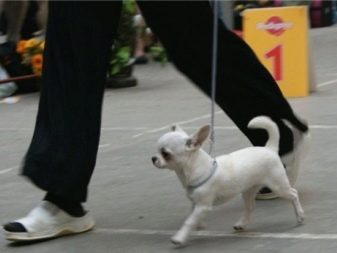
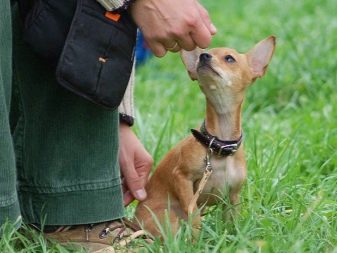

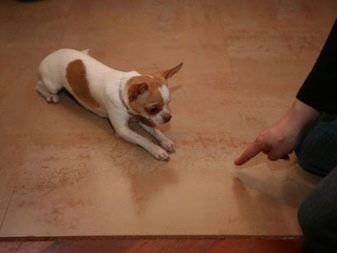
Team "Give a paw!" to the basic, as already noted, does not apply. But a rare owner does not try to teach her a pet. You can pronounce the command in any voice, the main thing is that the animal visually remembers the gesture (your substituted palm). First, the dog should be helped: take her foot and raise it. Then demand from her that she coped independently.
Very often, breeders ask how to properly raise a Chihuahua so that it grows up as a friendly dog. Carefully train your dog for up to 1 year. More often walk with her in parks, where there are many other animals, people, especially young children. She should not live on a reservation, accustom her to society. If a puppy is used to the world of people and other animals from a young age, he will not subsequently be aggressive towards them.
Chihuahuas are smart, nimble, hardy dogs. They are well trained in various tricks, can tumbling over their backs, jumping over not very large barriers.
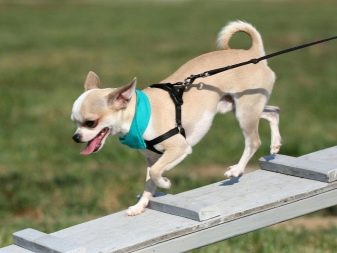
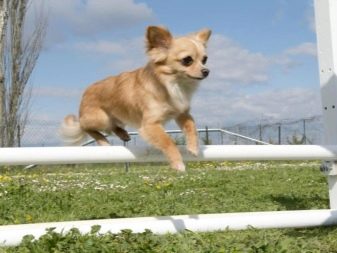
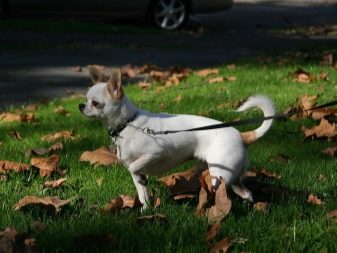
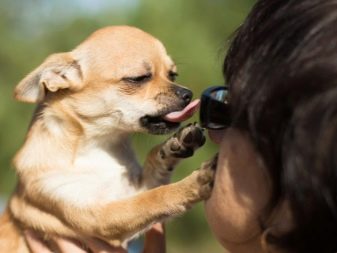
Try to deal with the dog as much as possible at the age of 4-6 months, which will give very good results.
About the 8 rules of dog training, see the next video.








































